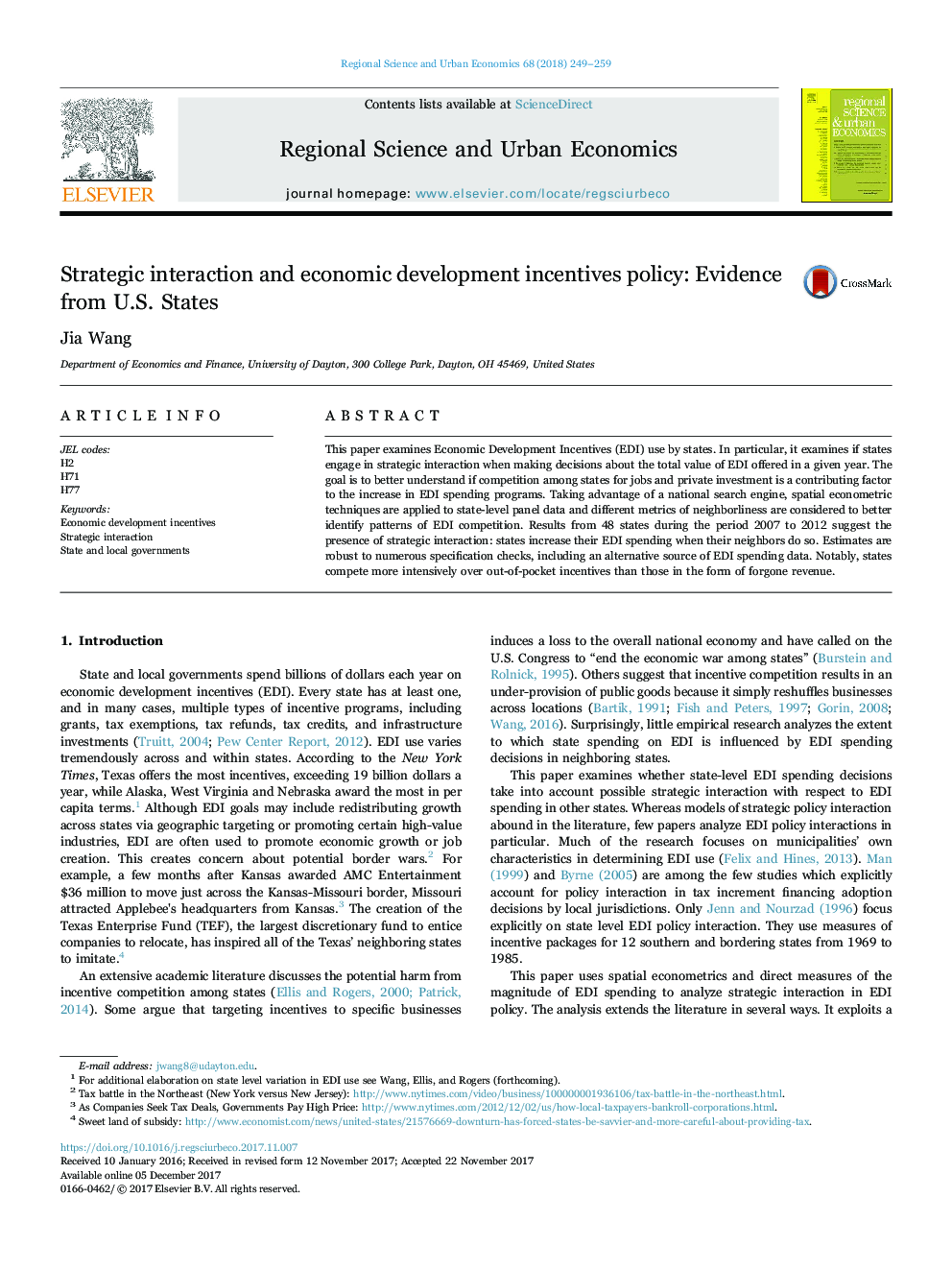| Article ID | Journal | Published Year | Pages | File Type |
|---|---|---|---|---|
| 7383761 | Regional Science and Urban Economics | 2018 | 11 Pages |
Abstract
This paper examines Economic Development Incentives (EDI) use by states. In particular, it examines if states engage in strategic interaction when making decisions about the total value of EDI offered in a given year. The goal is to better understand if competition among states for jobs and private investment is a contributing factor to the increase in EDI spending programs. Taking advantage of a national search engine, spatial econometric techniques are applied to state-level panel data and different metrics of neighborliness are considered to better identify patterns of EDI competition. Results from 48 states during the period 2007 to 2012 suggest the presence of strategic interaction: states increase their EDI spending when their neighbors do so. Estimates are robust to numerous specification checks, including an alternative source of EDI spending data. Notably, states compete more intensively over out-of-pocket incentives than those in the form of forgone revenue.
Keywords
Related Topics
Social Sciences and Humanities
Economics, Econometrics and Finance
Economics and Econometrics
Authors
Jia Wang,
